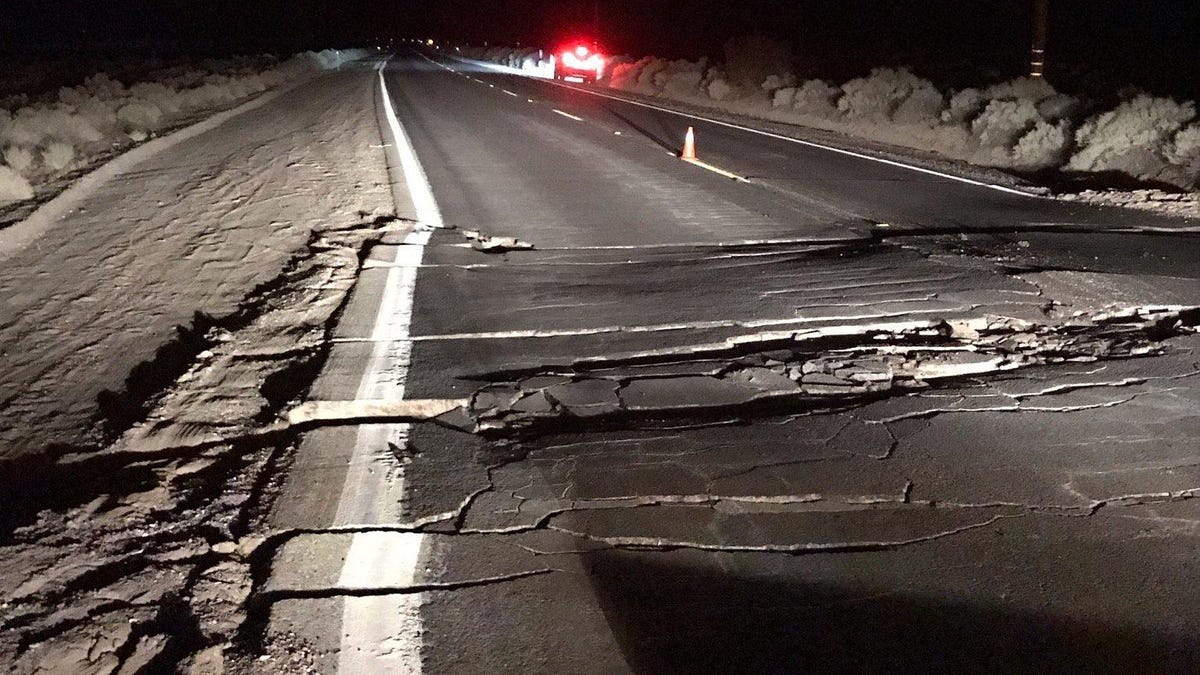NASA: Southern California July earthquake moved the ground this much
The earth-rattling Ridgecrest quake rearranged the land by a matter of feet.

The USGS shared this view of a highway broken apart by the Ridgecrest earthquake.
A 7.1-magnitude earthquake shook, rattled and rolled Southern California early in July. It did more than slosh water out of swimming pools and bring Disneyland to a halt. It also redecorated the landscape.
NASA's Advanced Rapid Imaging and Analysis (ARIA) team took a closer look at the Ridgecrest earthquake and its aftermath, crunched the numbers and figured out just how much it moved the earth around it. A colorful image highlights the action.
This map highlights the ground movement from the Ridgecrest earthquake.
The land west of the fault (in blue) moved as much as 2.7 feet (0.8 meters), while other areas (red and orange) moved as much as 2 feet (0.6 meters).
NASA's Earth Observatory released a before-and-after GIF on Thursday that illustrates the ground displacement. We previously saw the crack created by the quake in satellite views.
The before and after images show some dramatic changes caused by the Ridgecrest earthquake.
The ARIA team's work will help US government agencies assess the damage from the earthquake. "The analysis can be used to estimate where the fault moved deep and which areas have increased stress and higher likelihood of future earthquakes," NASA said.
The good news is the fault has quieted down since the main earthquake on July 5. "The odds of a subsequent large earthquake continue to drop with time since the mainshock," the US Geological Survey noted. The ground may get a chance to settle into its new configuration.

